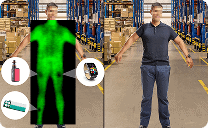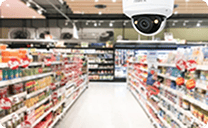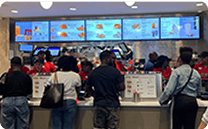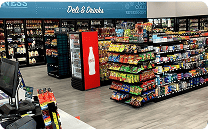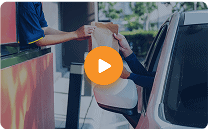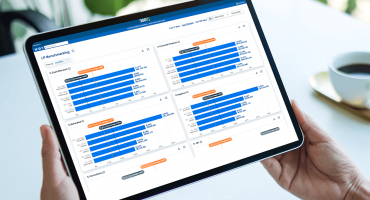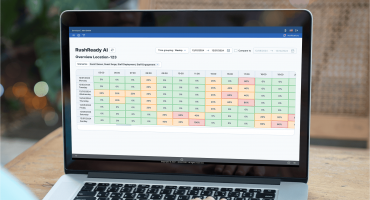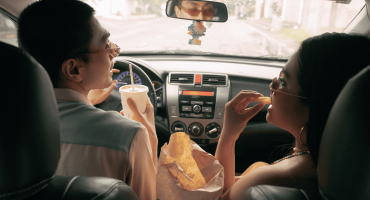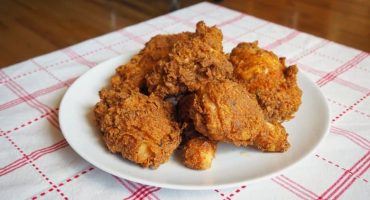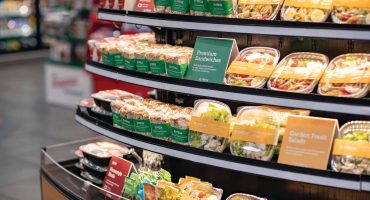In This article
Introduction
The modern consumer seeks a convenient and fast shopping experience. With 91% of US adults and 95% of adults aged 18–49 owning smartphones in 2024, smartphones have become the most popular mobile ordering device. QSR Magazine says, “Digital ordering and delivery has grown 300 percent faster than dine-in traffic since 2014.” Restaurateurs must act on this trend to give guests a convenient and fast mobile ordering and QSR experience.
- Convenience—Customers don’t have to wait in line to order; they can simply pick up their order.
- Speed—Consumers visit QSR restaurants because they expect “quick service.” Mobile ordering, especially in advance, speeds up the process, serving more customers in less time.
- Customer satisfaction – When customers are pleased with their mobile ordering and QSR experience, they are more likely to return and share their satisfaction with others.
The Rise of Mobile Ordering and QSR Experience
Mobile ordering in the quick-service restaurant (QSR) industry generates substantial revenues. The major restaurant mobile apps, such as Uber Eats, Grubhub, and DoorDash, generated over $10 billion in revenue in 2024. Many smaller app providers and individual restaurants have launched apps, too, to improve mobile ordering and QSR experience.
- Unsurprisingly, QSR customers, 25–34, are driving the rapid use of mobile ordering. According to Intouch Insights‘ 2024 Emerging Experience Study, 50% are more likely to use digital/mobile methods for QSR orders.
- Young adults are responsible for QSR order-ahead app adoption, another of the many mobile ordering trends, according to 90% of respondents to the Ipsos 2024 QSR/Fast Casual Digital Ordering Performance Study.
- Convenience is a primary reason many QSR customers use mobile ordering. Research has found that large percentages download a mobile ordering app to earn loyalty rewards or to save money with a deal or promotion.
- Many QSR customers also prefer mobile ordering because cash transactions are time-consuming and prone to errors.
Impact on QSR Operations and Customer Experience
Although QSRs have had to adopt new mobile ordering technologies and operational practices in response to customers who want a faster and more convenient experience, QSRs are discovering the value of improving mobile ordering and the QSR experience.
- Fewer errors occur with digital/mobile ordering than with phone or in-person ordering. There are fewer customer complaints about their orders, and filling orders is smoother.
- Mobile ordering tends to increase the average check size when QSRs employ the “suggestive upselling” tactic.
- The customer data generated from mobile ordering provides in-depth insights that traditional ordering methods can’t match.
- The QSR customer experience is enhanced because customers’ mobile orders are ready for them without standing in line or lengthy phone conversations.
- Placing a personalized order is easier for consumers.
Key Mobile Ordering Trends
Mobile ordering in QSRs has delivered significant value for Restaurateurs and customers, but the mobile-ordering technology is ever-evolving. To take full advantage, Restaurateurs must be familiar with the key mobile ordering trends. New strategies and practices are adding more value and helping restaurateurs improve the customer experience in QSR.
- As in many industries, Artificial Intelligence (AI) is already a mobile ordering trend in many QSRs. Customer purchasing habits can be granularly analyzed to pinpoint upselling suggestions.
- AI algorithms can improve the flow of orders and automate tasks that no longer need human attention, such as inventory and supply chain management.
- AI is also powering drive-thru chatbot voice ordering to satisfy consumers’ demand for speed, convenience, and custom orders.
- Digital menu boards are popular with QSR customers. The Intouch Insights report states, “63% of surveyed consumers said the boards make the process easier.” Menus, prices, and special offers can be updated anytime.
- Contactless payment systems also improve mobile ordering and QSR experience.
Benefits of Mobile Ordering for QSRs
The popularity of mobile ordering for QSRs among consumers and restaurateurs is a clear sign that the technology delivers benefits for both groups. Consumers want speed and convenience, and restaurateurs want to process as many orders as possible in a given period.
- Although speed of service and efficiency are essential factors for QSR customers, order accuracy is the most important. Mobile ordering enhances employees’ understanding of customers’ orders and minimizes errors.
- Many consumers, especially younger demographics who are primary QSR audiences, are familiar with receiving smartphone promotions. Consumers save money and are likely to be more loyal, and restaurateurs can realize increased revenues with promotions and upsells.
- Mobile ordering for QSRs also provides restaurateurs with a wealth of customer data, allowing them to adjust operations to fulfill demand during peak hours, manage inventory for popular menu items, and allocate employees more precisely.
- That data allows restaurateurs to micro-target customers with special offers and recommend upsell suggestions based on past purchases.
Implementation Strategies for Successful Mobile Ordering
Adding mobile ordering to QSR operations requires careful planning so restaurateurs realize an acceptable ROI and customers are satisfied, remain loyal, and recommend the QSR to others. Strategies for successful mobile ordering may include:
- Management and employees must support the mobile ordering initiative. Additional training will be necessary, and team roles may change. Depending on the QSR, suppliers may need to be notified.
- Finding the right mobile ordering platform may be the most critical decision. The platform must be flexible enough to manage the growth in mobile ordering.
- Restaurateurs want to ensure staffing levels and kitchen operations can accommodate increasing mobile orders and be prepared to adjust, accordingly.
- QSR operations need mobile ordering technology that is compatible with POS and kitchen operations and integrates with them easily.
- The right mobile ordering system is of no value without thorough staff training and retraining, if necessary. By understanding all the roles and steps in the process, managers and staff can quickly adapt to the new system.
Potential Challenges and How to Overcome Them
Implementing strategies for successful mobile ordering can pose various challenges. These are more likely to occur during the early days of integrating a mobile ordering system into any QSR operations. Being patient and focusing on each challenge will allow management and staff to overcome these challenges and prosper with mobile ordering for QSRs.
- Mobile ordering is a digital technology that can experience technical glitches that may frustrate staff and customers. Regular updates and maintenance can eliminate or minimize glitches and downtime.
- Mobile ordering can generate a rush of orders. All staff, especially kitchen staff, need specific training so they’re not surprised by a high volume of orders.
- Customers may have a poor experience with mobile ordering for QSRs, from a confusing app to slow loading times. Asking a few regular customers to give the app a trial run can help identify and correct any ordering challenges.
- Some customers may be reluctant to use mobile ordering. Part of a complete implementation plan includes marketing and promoting the platform and its benefits to customers. A special offer during the first 30 days for those who use the platform can overcome customer hesitancy.
Future Outlook: Expand Mobile Ordering Horizons
Like all digital technologies, mobile ordering will evolve with new advances and patrons’ ever-changing expectations of a better customer experience in QSR. Choosing the right mobile ordering platform and comprehensive staff training will ensure that restaurateurs and customers will benefit from the future of mobile ordering technologies.
- Artificial intelligence (AI) is predicted to impact mobile ordering significantly. Order data analysis, from menu selections to preparation flow, allows AI to recommend customers’ past favorites and direct them to special offers.
- AI is quickly maturing to provide QSR operations with voice assistants, intelligent chatbots, and an automated payment process, making mobile ordering easier for customers and staff.
- In-depth AI data analysis can also forecast inventory demand, streamline inventory management, and reveal where improvements are needed.
- Augmented Reality (AR) technology integrates with digital menu boards so customers can see what they’ve ordered before placing it.
- Robotic and automated kitchen technology is already changing QSR operations and will be more widely introduced, so restaurants can benefit from increased efficiency and reduced labor costs.
- As more customers choose delivery or pickup of their orders, AI and other technologies will be able to integrate with these customer preferences, further enhancing the customer experience in QSR.
Conclusion
Mobile ordering is already a reality at many QSRs. Customers are attracted to the ease of ordering, faster service, and more accurate orders. Restaurateurs are quickly realizing the value of a mobile ordering system and how it can be a competitive advantage. Not only can QSR operations process more orders, but there are fewer errors, the average check size increases, and management has a much more in-depth understanding of their customers and their preferences.
Implementing strategies for successful mobile ordering can present various challenges. Careful planning and comprehensive staff training can overcome many of those challenges. Future advancements in various technologies, from AI to AR to robotics, are expected to boost the value of mobile ordering and QSR experience. To learn more about DTiQ’s solutions for QSR, visit our website.
